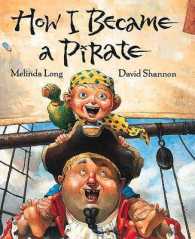Full Description
With the rising tide of scholarly and societal interest in the history and legacy of colonialism and slavery, this collection offers a much-needed diachronic analysis of the cultural representations of the lives and afterlives of those subjected to slavery and indenture. It focuses on the history of the 'neerlandophone' space, defined as the complex linguistic space spanning former Dutch colonies. This collection gives a longue durée overview, with cases from the early modern period to the present day, revealing the deep roots of the colonial 'cultural archive'. Scholars from a wide variety of disciplines demonstrate how attention to the layered and polyphonic qualities of narratives can reveal silent and disruptive voices in colonial discourse, as well as collective emotions and imaginations that have hitherto remained unrecorded in historical sources. They discuss different aesthetic, poetic, and storytelling practices, including literature, archival and legal documents, performance, architecture, photography, and philosophy, formed both in the metropolis and by enslaved and indentured peoples in the colonies.
Contents
1. Introduction, Marrigje Paijmans, Literary Imaginations, 2. Enslaved to the Passions: Slavery, Emotions, and Trade in a Seventeenth-Century Dutch Comedy, Marrigje Paijmans, 3. 'Pleasant and Useful Reading for Dutch Youth': Attitudes on Slavery in A. E. van Noothoorn's Fictional Travel Accounts for Children (1843-1851), Claudia Zeller, 4. Convict Labour and Concubinage in the Dutch East Indies: Historical and Literary Reappropriations of Martha Christina Tiahahu's Anti-Colonial Revolt, Gerlov van Engelenhoven,Intersecting Imaginations, 5. The Elephant and Slavery: Thinking about Slavery through the Animal in the Early Modern Dutch Empire (1650-1800), Pichayapat Naisupap, 6. Law as a Sociocultural Imaginary: Legal Arguments, Social Hierarchy and Pro-Slavery in the Dutch Republic, ca. 1760-1780, Gertjan Schutte, 7. Januari's Ghost: A Tale of Slavery, Sexuality, and Boyhood on Board of a VOC Vessel, Alicia Schrikker, 8. Transformative Work: An Antislavery Petition at the National Exhibition of Women's Labour, 1898, Sophie van den Elzen,Visual and Spatial Imaginations, 9. Not Absent, But Not Seen: Narrating the History of Slavery at the Cape, Carine Zaayman, 10. (Re)Visualising Slavery: An Outlook on the Indian Ocean and Indonesian Archipelago, Nancy Jouwe, 11. Making an Embodied Absence Present: Tourism and the Cultural Imaginary of Slavery and Colonial Heritage in the Netherlands, Emmanuel Akwasi Adu-Ampong, 12. Reframing History: The Artistic Reclamation of Colonial Photography and the Quest for De-victimisation, Brenda Bikoko, 13. Imagining Dutch Slavery Legacies Through the Rural-Urban Divide in the TV-show Grenslanders, Anke Bosma,Philosophical Imaginations, 14. Born in Bondage: Slavery, Freedom, and Enlightenment in Spinoza, Hasana Sharp, 15. Coordinates of a Slave's Body in a Philosopher's Dream, Thomas van Binsbergen, 16. Human-ing Out Loud: Ontologies of Disorder in a Musically Exemplified Trans-Caribbean Option, Charissa Granger and Francio Guadeloupe, 17. Epilogue: Histories of Imagination and the Making of Cultural Archives, Susan Legêne.








